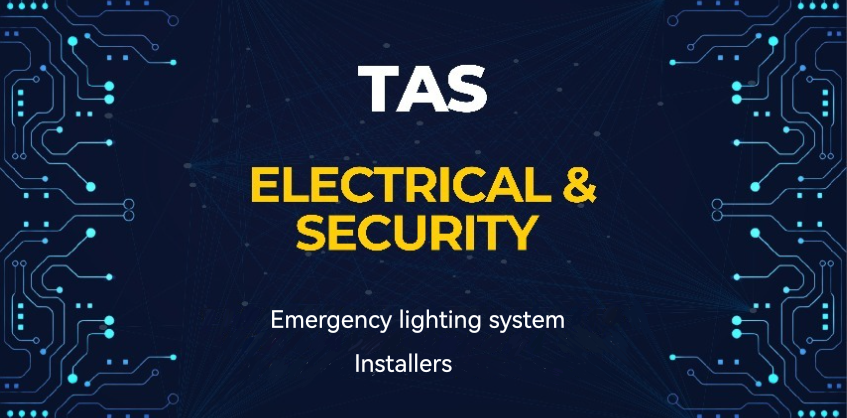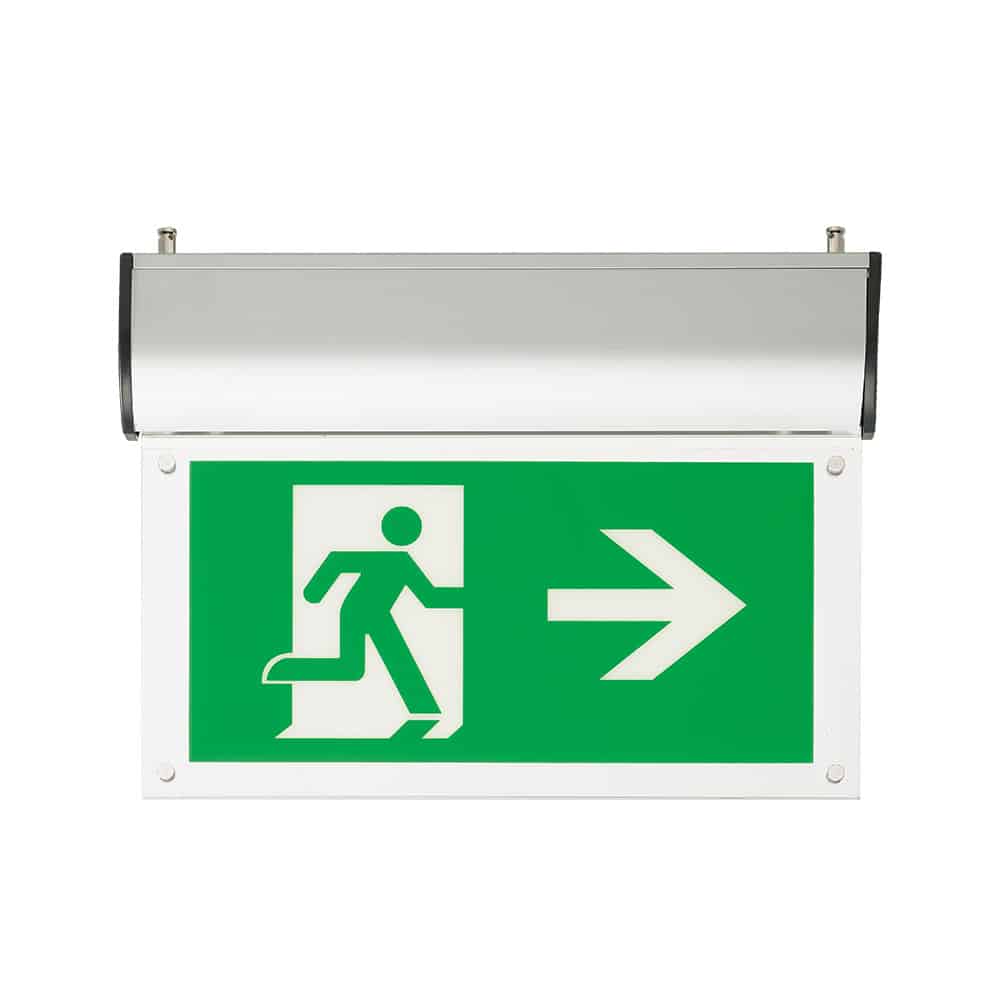| 07830655771 |  |
 |
 |
| Electricians Tabley |
Fire Alarm Systems | CCTV Company |
Intruder Alarms |
Access Control |
Emergency Lighting | Nurse Call Systems | PAT Testing |
Security Lighting |
EICR Reports |
Fire Risk Assessments |
 |
With over a decade of NICEIC registration, TAS Electrical and Security is a trusted authority in the field. Specializing in early warning and life safety systems, we offer comprehensive services including installation, testing, and maintenance of emergency lighting systems. Our expertise spans all types of emergency lighting, ensuring top-notch protection for diverse settings. Trust TAS Electrical and Security for reliable solutions tailored to your fire safety needs. |
 |
At TAS Electrical, we prioritize seamless installation, testing, and maintenance of emergency lighting systems with minimal disruption to working conditions and property. Our team is dedicated to ensuring efficient procedures that safeguard both productivity and the integrity of your premises. With meticulous planning and execution, we strive to complete projects swiftly and smoothly, allowing you to focus on your operations without interruption. Trust TAS Electrical for expert emergency lighting solutions that prioritize safety and convenience for your environment. |
The Importance of emergency lighting systems for Landlords and Business Owners in England |
In England, ensuring the safety and well-being of occupants in both residential and commercial properties is not just a legal obligation but a moral one. One critical aspect of safety that often goes unnoticed until it's needed is emergency lighting. This essential system provides illumination when the main power supply fails, guiding occupants to safety during emergencies. For landlords and business owners, understanding the importance of emergency lighting systems can mean the difference between life and death in a crisis. Legal Requirements and ComplianceRegulatory FrameworkIn England, the Regulatory Reform (Fire Safety) Order 2005 mandates that adequate emergency routes and exits must be provided and maintained. This includes emergency lighting that must be effective in case of power failure. Landlords and business owners must comply with these regulations to avoid legal repercussions and ensure the safety of their premises. Regular InspectionsRegular inspections and maintenance of emergency lighting systems are required to ensure they function correctly when needed. Failure to comply can result in fines, legal action, and increased liability in the event of an incident. Landlords and business owners must keep records of maintenance and testing to demonstrate compliance. Benefits of Emergency Lighting SystemsEnhancing SafetyThe primary purpose of emergency lighting is to enhance safety by providing illumination during power outages, fires, or other emergencies. This lighting helps prevent panic, reduce accidents, and facilitate a smooth and orderly evacuation. Legal and Insurance ImplicationsHaving a well-maintained emergency lighting system can impact insurance premiums and liability. Insurance companies often look favorably upon properties with comprehensive safety measures, which can lead to lower premiums. Additionally, in the event of an emergency, proper lighting can reduce the risk of injury claims. Protecting AssetsEmergency lighting not only protects people but also the property itself. By facilitating a quick and safe evacuation, emergency lighting helps minimize potential damage to the property and its contents during an emergency. Implementing an Effective Emergency Lighting SystemAssessment and PlanningThe first step in implementing an emergency lighting system is a thorough assessment of the property. Identify key areas that require illumination, such as exit routes, stairways, and large open spaces. A detailed plan should outline the types and locations of emergency lights needed to ensure comprehensive coverage. Installation by ProfessionalsProfessional installation is crucial for the reliability of an emergency lighting system. Certified electricians and fire safety experts should install the system to ensure it meets all regulatory requirements and functions correctly. Regular Testing and MaintenanceOnce installed, regular testing and maintenance are essential to ensure the system's reliability. Monthly checks should be conducted to test the batteries and functionality of the lights. An annual full discharge test is also recommended to ensure the system can perform for the required duration in an emergency. Challenges and ConsiderationsCost ImplicationsWhile the initial cost of installing an emergency lighting system can be significant, the long-term benefits far outweigh the expense. Consider it an investment in safety and compliance that can prevent costly legal issues and potential loss of life. Technological AdvancesAdvancements in technology have led to more efficient and reliable emergency lighting solutions. LED lights, for instance, offer longer life spans and lower energy consumption compared to traditional lighting. Landlords and business owners should stay informed about these advancements to ensure their systems are up to date. Integration with Other Safety SystemsIntegrating emergency lighting with other fire safety systems, such as alarms and sprinklers, can enhance overall safety. A coordinated approach ensures that all systems work together seamlessly during an emergency, providing comprehensive protection. ConclusionFor landlords and business owners in England, the importance of emergency lighting systems cannot be overstated. These systems are a critical component of fire safety, ensuring the well-being of occupants and compliance with legal requirements. By investing in proper assessment, professional installation, and regular maintenance, property owners can protect lives, reduce liability, and safeguard their assets. In a world where safety is paramount, emergency lighting is a beacon that guides everyone to safety when it matters most. |
Emergency Lighting Installers, Emergency Lighting Installation, Emergency Lighting Testing, Emergency Lighting Maintenance, Tabley |
A Comprehensive Guide To Fire Alarm Systems And Grades In The UK |
Emergency lighting is a critical component of safety systems in both residential and commercial properties in the UK. It ensures that, in the event of a power failure or emergency, occupants can evacuate safely and efficiently. Understanding the different types of emergency lighting systems and their grades is essential for property owners, managers, and safety professionals. This guide provides a detailed overview of emergency lighting systems, their importance, regulatory requirements, and the various grades used in the UK. What is Emergency Lighting?Emergency lighting is designed to provide illumination when the main power supply is cut and normal lighting fails. It is essential for preventing panic, guiding occupants to safety, and ensuring that critical tasks can continue during a power outage. Emergency lighting typically includes:
Regulatory Requirements in the UKKey LegislationIn the UK, emergency lighting systems must comply with several key pieces of legislation:
Compliance and InspectionRegular testing and maintenance are mandatory to ensure that emergency lighting systems function correctly when needed. Compliance includes:
Types of Emergency Lighting SystemsNon-Maintained SystemsNon-maintained emergency lighting systems are designed to operate only when the main power supply fails. These systems are commonly used in workplaces and public buildings. Maintained SystemsMaintained emergency lighting systems are operational at all times and are common in places where lighting is required during power failure and normal conditions, such as theatres and cinemas. Combined SystemsCombined systems integrate both maintained and non-maintained lighting, ensuring continuous operation and emergency illumination. Self-Contained SystemsSelf-contained emergency lighting systems have all necessary components (battery, control unit, lamp) in one unit, making them easier to install and maintain. Central Battery SystemsCentral battery systems use a single power source for multiple emergency lights, making them suitable for larger buildings. They offer simplified maintenance but require more complex installation. Emergency Lighting GradesEmergency lighting systems are classified into different grades based on their performance and reliability. Understanding these grades helps in selecting the appropriate system for your needs. Grade AGrade A systems are the highest standard of emergency lighting. They are fully addressable, meaning each light can be individually monitored and tested. These systems provide the most reliable and flexible solution and are often used in large or high-risk buildings. Grade BGrade B systems offer a high level of reliability but are not fully addressable. They typically include automatic testing and monitoring features but may not provide the same level of individual control as Grade A systems. These systems are suitable for medium to large buildings. Grade CGrade C systems are less sophisticated than Grades A and B and do not include automatic testing or individual light monitoring. They are typically used in smaller buildings where manual testing is feasible. Grade DGrade D systems are the most basic form of emergency lighting, often involving simple, non-maintained lights with manual testing. These systems are suitable for small buildings with minimal occupancy. Implementing Emergency Lighting SystemsAssessment and PlanningBefore installing an emergency lighting system, a thorough assessment of the property is required. This includes identifying escape routes, high-risk areas, and ensuring compliance with relevant standards. Professional InstallationEmergency lighting systems should be installed by qualified professionals to ensure compliance with BS 5266-1 and other relevant standards. Proper installation is crucial for the reliability of the system. Regular Testing and MaintenanceRegular testing and maintenance are essential to ensure the system functions correctly during an emergency. This includes monthly function tests, annual full discharge tests, and routine inspections. Documentation and Record KeepingKeeping detailed records of all tests, maintenance, and inspections is crucial for compliance and safety audits. Documentation helps demonstrate due diligence and ensures quick identification and resolution of any issues. ConclusionEmergency lighting systems are a vital component of safety in any building. Understanding the types, grades, and regulatory requirements helps ensure that the right system is chosen and maintained. For landlords, business owners, and safety professionals in the UK, investing in a reliable emergency lighting system is an essential step in protecting lives and property. By adhering to regulations and maintaining a high standard of safety, you can provide a secure environment for all occupants. |
Emergency Lighting Installers, Emergency Lighting Installation, Emergency Lighting Testing, Emergency Lighting Maintenance, Tabley |
Emergency Lighting Systems In Houses Of Multiple Occupation (HMOs) in The UK |
Houses of Multiple Occupation (HMOs) present unique challenges when it comes to ensuring the safety and well-being of occupants. These properties, typically housing multiple tenants with shared facilities, require stringent fire safety measures to protect all residents. One critical aspect of fire safety in HMOs is the installation and maintenance of emergency lighting systems. This blog explores the importance, regulatory requirements, types, and best practices for emergency lighting systems in HMOs in the UK. Importance of Emergency Lighting in HMOsSafety of OccupantsIn the event of a fire or power outage, emergency lighting provides essential illumination, guiding occupants to safety. Given the often complex layout of HMOs, with multiple rooms and shared corridors, emergency lighting helps prevent panic and ensures a safe and orderly evacuation. Legal ComplianceEnsuring the proper installation and maintenance of emergency lighting is not just a safety measure but a legal requirement. Non-compliance can result in significant legal consequences for landlords, including fines, prosecution, and loss of rental income. Property ProtectionEffective emergency lighting systems can help mitigate damage to property by facilitating a quicker and safer evacuation, allowing emergency services to access and manage the situation more efficiently. Regulatory RequirementsThe Regulatory Reform (Fire Safety) Order 2005This legislation mandates that all HMOs have adequate fire safety measures, including emergency lighting, to ensure safe evacuation in the event of a fire. The order places the responsibility on landlords to ensure compliance. Licensing and Local Authority StandardsMany HMOs require a license from the local authority, which often stipulates specific fire safety requirements, including the provision of emergency lighting. Landlords must adhere to these standards to obtain and maintain their HMO license. BS 5266-1: Emergency Lighting Code of PracticeBS 5266-1 provides detailed guidelines for the design, installation, and maintenance of emergency lighting systems. Compliance with this standard ensures that the emergency lighting system is adequate and reliable. Types of Emergency Lighting Systems for HMOsNon-Maintained SystemsNon-maintained systems are designed to operate only when the main power supply fails. These are commonly used in HMOs to provide emergency illumination during power outages or fires. Maintained SystemsMaintained systems are operational at all times, providing continuous lighting that switches to emergency mode during a power failure. These systems are suitable for areas within HMOs that require constant illumination, such as corridors and stairwells. Self-Contained SystemsSelf-contained systems have all necessary components (battery, control unit, lamp) in one unit. These are often easier to install and maintain, making them a practical choice for HMOs. Central Battery SystemsCentral battery systems use a single power source to supply multiple emergency lights. While more complex to install, they offer simplified maintenance and are ideal for larger HMOs. Best Practices for Emergency Lighting in HMOsAssessment and PlanningConduct a thorough assessment of the property to identify key areas that require emergency lighting, such as escape routes, stairways, and communal areas. Develop a detailed plan to ensure comprehensive coverage. Professional InstallationEnsure that the emergency lighting system is installed by qualified professionals. Proper installation is crucial for the system's reliability and compliance with BS 5266-1 and other relevant standards. Regular Testing and MaintenanceRegular testing and maintenance are essential to ensure the system functions correctly during an emergency. This includes:
Record KeepingMaintain detailed records of all tests, maintenance, and inspections. This documentation is crucial for compliance verification and helps demonstrate due diligence in ensuring tenant safety. Tenant EducationEducate tenants about the importance of emergency lighting and fire safety measures. Ensure they are familiar with escape routes and the location of emergency lights. Common Challenges and SolutionsCost ConsiderationsWhile the initial cost of installing emergency lighting can be significant, the long-term benefits far outweigh the expense. Consider it an investment in safety and legal compliance. Explore available grants or financial assistance programs that may help offset costs. Technological AdvancesStay informed about advancements in emergency lighting technology, such as LED lighting, which offers longer life spans and lower energy consumption. Upgrading to modern systems can improve reliability and reduce maintenance costs. Integration with Other Fire Safety SystemsIntegrate emergency lighting with other fire safety systems, such as fire alarms and smoke detectors. A coordinated approach ensures that all systems work together seamlessly during an emergency, providing comprehensive protection. ConclusionEmergency lighting systems are a critical component of fire safety in Houses of Multiple Occupation (HMOs). Ensuring their proper installation, regular testing, and maintenance is essential for the safety of occupants and legal compliance. Landlords must stay informed about regulatory requirements and best practices to protect their tenants and property. By investing in reliable emergency lighting systems and adhering to safety standards, landlords can create a secure living environment that meets all legal obligations and enhances the overall safety of their HMO properties.
|
Emergency Lighting Installers, Emergency Lighting Installation, Emergency Lighting Testing, Emergency Lighting Maintenance, Tabley |
Steps To Determine The Right Emergency Lighting System For your Home Or Businss |
Choosing the right emergency lighting system for your home or business is a crucial step in ensuring safety during power outages or emergencies. An effective emergency lighting system can prevent accidents, guide occupants to safety, and help you meet legal requirements. Here’s a step-by-step guide to help you determine the right emergency lighting system, and how TAS Electrical and Security can assist you in this essential process. 1. Understand Your NeedsAssess the Property Type and LayoutThe first step is to assess the type of property (residential or commercial) and its layout. Consider the following:
Identify Key Areas for Emergency LightingIdentify areas that need emergency lighting, such as:
Understanding these needs helps in selecting the appropriate type and placement of emergency lights. 2. Know the Regulatory RequirementsLegal ComplianceEnsure that your emergency lighting system complies with local regulations and standards. In the UK, relevant regulations include:
Compliance is crucial for legal safety and avoiding potential fines or legal issues. 3. Choose the Type of Emergency Lighting SystemNon-Maintained SystemsThese systems operate only during a power failure. They are commonly used in workplaces and public buildings where lighting is not required continuously. Maintained SystemsMaintained systems operate continuously and switch to emergency mode during a power failure. These are suitable for areas that need constant illumination, such as theatres and cinemas. Combined SystemsCombined systems integrate both maintained and non-maintained lighting, ensuring continuous operation and emergency illumination when needed. Self-Contained SystemsThese systems have all components (battery, control unit, lamp) in one unit, making them easier to install and maintain. Central Battery SystemsCentral battery systems use a single power source to supply multiple emergency lights, suitable for larger buildings with more complex layouts. 4. Professional Assessment and PlanningConsult with ExpertsProfessional assessment and planning are critical to ensuring that your emergency lighting system is effective and compliant. TAS Electrical and Security offers comprehensive consultation services to help you assess your property’s specific needs. Develop a Detailed PlanWork with professionals to develop a detailed emergency lighting plan that includes:
5. Professional InstallationCertified TechniciansEnsure that the installation is carried out by certified technicians. Proper installation is crucial for the reliability of the system. TAS Electrical and Security Installation ServicesTAS Electrical and Security specializes in the installation of emergency lighting systems. Our team of certified technicians ensures that your system is installed correctly and efficiently, minimizing disruption to your property. 6. Regular Testing and MaintenanceRoutine ChecksRegular testing and maintenance are essential to ensure that your emergency lighting system functions correctly when needed. This includes:
Maintenance Services by TAS Electrical and SecurityTAS Electrical and Security offers comprehensive maintenance services, ensuring that your emergency lighting system is always in top condition. We provide routine checks, repairs, and replacements as needed. 7. Documentation and Record KeepingMaintain RecordsKeep detailed records of all tests, maintenance, and inspections. This documentation is crucial for compliance verification and helps demonstrate due diligence. How TAS Electrical and Security Can HelpAt TAS Electrical and Security, we understand the importance of a reliable emergency lighting system. We offer a full range of services, including:
Contact Us TodayProtect your home or business with a reliable emergency lighting system from TAS Electrical and Security. Contact us today to schedule a consultation and ensure the safety and compliance of your property.
|
Emergency Lighting Installers, Emergency Lighting Installation, Emergency Lighting Testing, Emergency Lighting Maintenance, Tabley |
| Social Media |
Emergency Lighting Installers, Emergency Lighting Installation, Emergency Lighting Testing, Emergency Lighting Maintenance, Tabley |
 |
| 07830655771 |  |
Emergency Lighting Installers, Emergency Lighting Installation, Emergency Lighting Testing, Emergency Lighting Maintenance, Tabley |